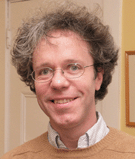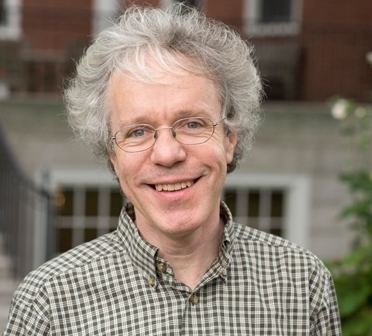Nationality United Kingdom | Name Peter Kronheimer Role Mathematician | |
 | ||
Alma mater City of London SchoolUniversity of Oxford Doctoral students Ian DowkerCiprian ManolescuJacob RasmussenOlga Plamenevskaya Books Monopoles and Three-Manifolds, Monopoles and Three-Manifolds ICM Edition Similar People Michael Atiyah, Ciprian Manolescu, Isadore Singer | ||
Notable students Ciprian Manolescu | ||
Peter Benedict Kronheimer (born 1963) is a British mathematician, known for his work on gauge theory and its applications to 3- and 4-dimensional topology. He is William Caspar Graustein Professor of Mathematics at Harvard University.

Kronheimer's early work was on gravitational instantons, in particular the classification of hyperkähler four manifolds with asymptotical locally euclidean geometry (ALE spaces) leading to the papers "The construction of ALE spaces as hyper-Kähler quotients" and "A Torelli-type theorem for gravitational instantons." He and Nakajima gave a construction of instantons on ALE spaces generalizing the Atiyah-Hitchin-Drinfeld-Manin construction. This constructions identified these moduli spaces as moduli spaces for certain quivers (see " Yang-Mills instantons on ALE gravitational instantons.") He was the initial recipient of the Oberwolfach prize in 1998 on the basis of some of this work.
Kronheimer has frequently collaborated with Tomasz Mrowka of MIT. Their collaboration began in Oberwolfach and their first work developed analogues of Donaldson's invariants for 4-manifolds with a distinguished surface. They used the tools developed to prove a conjecture of Milnor, that four-ball genus of a (p,q)- torus knot is (p-1)(q-1)/2. They then went on to develop these tools further and established a structure theorem for Donaldson's polynomial invariants using Kronheimer–Mrowka basic classes. After the arrival of Seiberg–Witten theory their work on embedded surfaces culminated in a proof of the Thom conjecture—which had been outstanding for several decades. Another of Kronheimer and Mrowka's results was a proof of the Property P conjecture for knots. They developed an instanton Floer invariant for knots which was used in their proof that Khovanov homology detects the unknot.
Kronheimer attended the City of London School. He completed his PhD at Oxford University under the direction of Michael Atiyah. He has had a long association with Merton College, the oldest of the constituent colleges of Oxford University, being an undergraduate, graduate, and full fellow of the college.
Besides his research articles, his writings include a book, with Simon Donaldson, on 4-manifolds, and a book with Mrowka on Seiberg–Witten–Floer homology, entitled "Monopoles and Three-Manifolds". This book won the Doob Prize of the AMS.
His PhD students have included Ian Dowker, Jacob Rasmussen, Ciprian Manolescu, and Olga Plamenevskaya.
